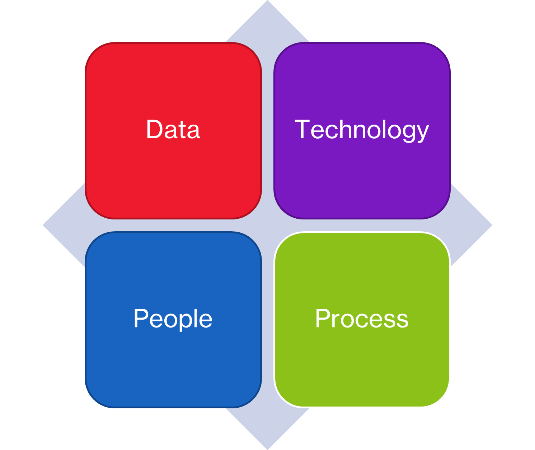Using CDP to design a successful business operating model

In our last post, we shared some tips for a successful CDP implementation. In this post, we focus on one of the most critical factors for CDP success: designing a new business operating model. If you’d like to read all the blogs right away, you can register here to access the complete series.

We often find that organisations try to solve their marketing challenges by only changing their data and tech capabilities. However, people and process changes alongside this are just as important.
With the introduction of a CDP, businesses gain access to different capabilities that enable greater automation and efficiencies. The challenge lies in how to best adopt the use of these new capabilities, especially when an organisation currently consists of multiple teams, each responsible for different channels, life stages, products or customer segments.
A new operating model is needed to redesign and reorganise these teams, ensuring that processes are designed with the new capabilities in mind. This ensures that the organisation fully benefits from its capabilities.
Without a well-designed operating model, businesses may fail to harness the full potential that a CDP has to offer. In this blog, we will discuss the best practices for designing a new business operating model to get success from a CDP implementation.
Step 1: Conduct a business-wide assessment of the existing operating model
A business-wide assessment covering a review of the existing operating model is a good place to start. This will help identify gaps and inefficiencies that need to be addressed before implementing a CDP. These gaps may be related to skills as well as the actual number of resources required by various functions.
Step 2: Establish design principles
Next, establish CDP operating model design principles that will guide the development of the target model. This will ensure that the CDP capabilities are utilised efficiently and effectively. When designing the target operating model, consideration needs to be given to the re-allocation of resources and the impact on individuals whose jobs will likely change. Ideally, the new operating model will enable them to work more effectively and efficiently. However, any change needs careful consideration and planning ahead of roll out.
Step 3: Get the necessary buy-in from stakeholders
A step-by-step approach will ensure success. It is important to get buy-in from leadership to ensure that everyone is aligned and invested in the project. This will help to ensure that communication, process and people collaboration are effectively managed. A steering committee is necessary and plays a vital role in the design of the operating model and the management of delivery. Within that, having CDP advocates who will champion the new operating model will help drive adoption across the organisation.
Overarching best practices to consider
When designing the target operating model, it is important to balance rigour with flexibility. A CDP implementation should account for the impacts on different parts of the business in different ways, from reducing the burden on data engineers to empowering marketers to deliver real-time use cases. This requires a collaborative effort between teams and a willingness to adapt to new ways of working.
Ultimately, designing a new business operating model is critical to the success of a CDP implementation. By taking a step-by-step approach, establishing CDP advocates and balancing rigour with flexibility, businesses can maximise the value of their CDP investment and gain a deeper understanding of their customers. The key consideration of change a CDP brings such as communication, process, people collaboration, and the need for leadership buy-in make it clear that CDP success is not just about data and marketing technology.
How can CACI help?
As subject matter experts at CACI, we can tell you that a well-implemented CDP can be a game-changer for businesses of all sizes and we have hands on experience with many brands including ASOS, Kingfisher, L&G, PlayStation, Telegraph, EasyJet and DFS. If you’re interested in learning more about CDPs and how they can help your business, please don’t hesitate to reach out to one of our experts.
This post is the part of a blog series on all things CDP, so make sure to check out our previous blogs to get a complete picture of CDP implementation best practices. If you would like to download the whole blog series, you can simply register here to download a copy of the whitepaper.
If you’re interested in learning more about CDPs and how they can help your business, please don’t hesitate to contact us and reach out to one of our experts.
Continue reading:
Blog 1 – How a CDP can transform your customer experience architecture
Blog 2 – CDP vs. SCV: why choosing between the two is a big mistake
Blog 3 – CDP and CEP: A perfect pair for a seamless customer experience
Blog 4 – How to avoid pitfalls & drive results in CDP implementation